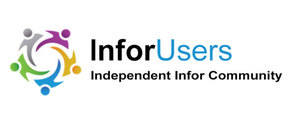The Problem: Efficiently Capturing Healthcare Data from Disparate Sources
US healthcare has been plagued by the inability to efficiently capture data from disparate sources. Having this ability could provide a more complete medical record for patients, and it could also support analytics and emerging artificial intelligence (AI) programs. The industry initially used HL7 2.X standards to format data sharing between disparate systems. These standards provided a framework but not the definition needed to support data integration processes between disparate information systems.
There is an industry saying that “If you’ve seen one HL7 2.X interface, you’ve seen one HL7 2.X interface.” For example, an interface between an Epic enterprise EHR and a Sunquest Laboratory system will vary from one organization to the next in how they use the HL7 2.X format. They may use 90% of the same interface code, but the remaining 10% is different to accommodate various data elements or formats. The slight differences in coding may lead to support overhead for maintaining the interfaces between system updates.
The provider organizations’ need for a more complete patient record created a market of interface engine vendors. This in turn drives the need to create interface standards for HL7. The pandemic highlighted the need for more efficient data sharing, not only within information systems of the provider organization but also within information systems from remote facilities and healthcare systems not associated with provider organizations. These needs, in addition to providing patients with access to their medical records, are driving the new interoperability focus of the ONC.
The Solution: Large Technology Vendors Develop Healthcare Interoperability Platforms
HL7 has advanced the standards for data interoperability by creating the Fast Healthcare Interoperability Response (FHIR) standards. FHIR standards are being used by several large technology companies such as Google, Amazon, and Microsoft to establish cloud-based data environments. In these environments, application program data services are standardized to populate a data lake that can be used to improve business and clinical analytics as well as AI applications.
Cloud-based data acquisition and analytics capabilities for healthcare organizations may disrupt the enterprise data warehouse markets. Disruption will be based on the total cost of ownership for the new solutions as well as ease of use for creating the analytics views and reports health organizations need to improve operations and quality of care. Another consideration for care provider adoption of the cloud solutions will be the ability to off-load data management and data science functions to the large technology vendors. If providers outsource their data management and data science functions, the large technology companies will need to improve their expertise relative to healthcare data and associated analytics.
While FHIR will improve the ability to standardize data sharing services more effectively between different healthcare IT environments, it will not solve the problem associated with creating a complete normalized data standard. Laboratory data can be mapped to LOINC standard codes to ensure laboratory testing codes are consistent across systems. LOINC has not been identified as a standard for use with many data models. Standardizing symptoms will be another data standardization challenge.
The Justification: What Vendor Do You Trust with Your Data?
As healthcare organizations create data governance strategies, they will need to review legacy and emerging large data solutions to determine which approach will meet their operational, privacy, and security needs. Establishing and maintaining large databases of patient information will need to be supported with personnel who have data management/scientist skills that may be hard to find and retain.
Resources who will create and manage interoperability data services may also be hard to secure. Skilled resource challenges will likely drive the healthcare market toward the large technology vendors that have significant experience in acquiring, managing, securing, and analyzing data from several industries. While Google and Microsoft have failed in prior efforts, their new approach and technologies will make them formidable competitors to other solutions.
The Players: Large Technology Companies Launching Healthcare Data Solutions
Companies focused on healthcare IT operability using cloud solutions:
- Google Healthcare Data Engine: Assists healthcare and life sciences organizations with the harmonization of data from multiple sources.
- Amazon HealthLake: Aggregates an organization’s complete data across various silos and disparate formats into a centralized AWS data lake.
- Microsoft Cloud for Healthcare: Provides capabilities to manage health data at scale to improve the interoperability of health data.
Success Factors
- Healthcare organizations should establish robust data governance committees to review their data needs on a quarterly basis.
- Healthcare organizations should only acquire IT products with a client base that is effectively using FHIR to create interoperability with other systems. IT solutions that don’t support FHIR should be replaced.
- If healthcare organizations are having challenges recruiting or retaining skilled interoperability and database management/scientist resources, they should consider cloud-based data solutions from large technology companies.
Summary
Acquiring and analyzing patient data across disparate care delivery environments will become a critical success factor for healthcare organizations as value-based care reimbursement continues to advance. The pandemic highlighted the need for capturing patient data across all modalities of care, including the home, to provide higher care quality and outcomes.
Legacy enterprise data warehouse environments provide structured data model environments to support the necessary business and population health analytics. Adding outside data to these solutions requires the ability to capture, normalize, and populate new data tables that can be associated with existing data to enhance desired organization analytics.
Google, AWS, and Microsoft have been working with large provider organizations to develop robust and flexible large data environments (e.g., data lakes) that will enhance data analytics, sharing, and interoperability for the US healthcare market. These companies are driving cloud and AI data solutions that will likely disrupt legacy data warehouse and analytics solutions.
Both Google and Microsoft have failed with healthcare data solutions in the past, establishing risk factors that must be considered by healthcare organizations.
Photo credit: Shuo, Adobe Stock


